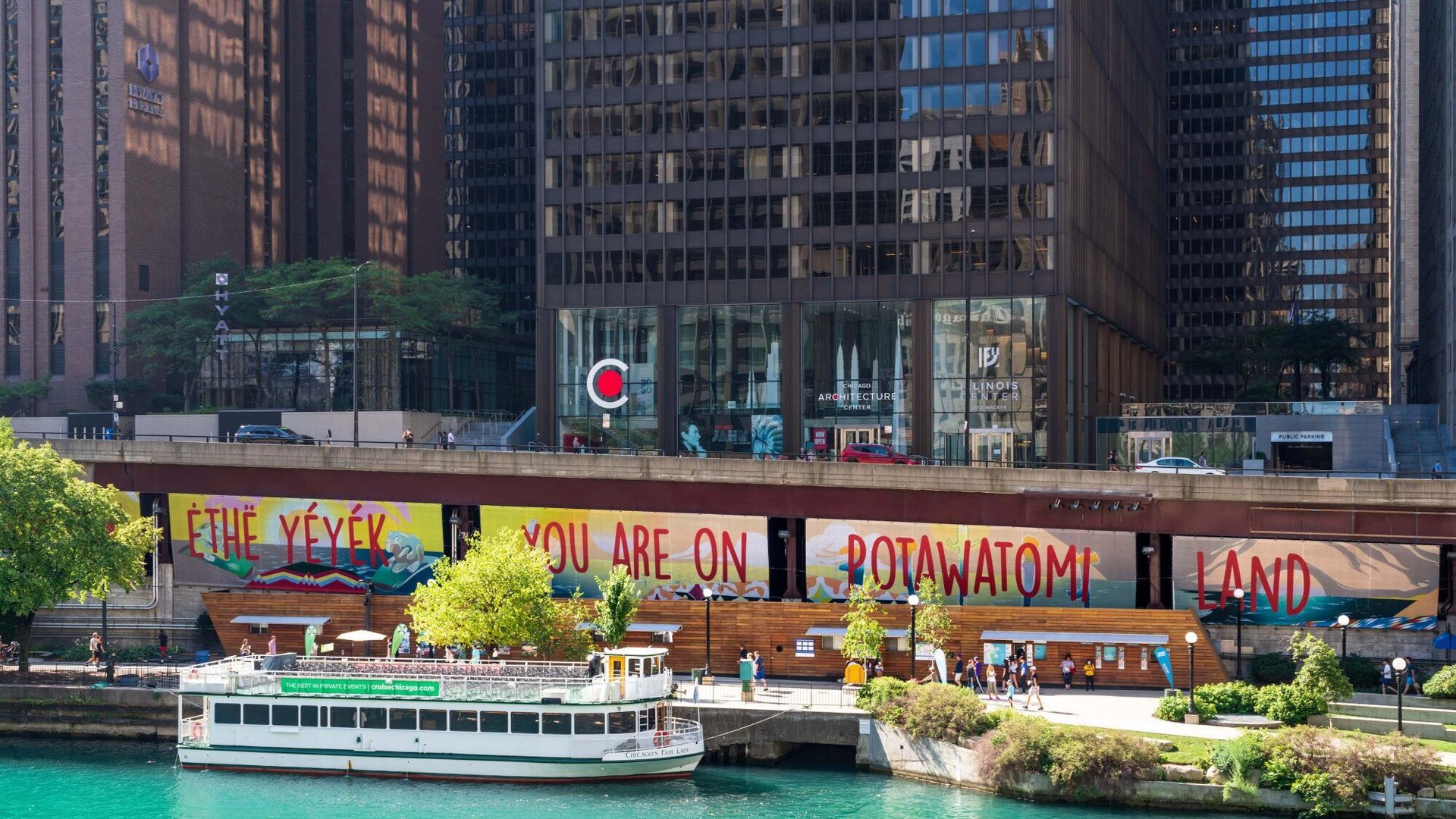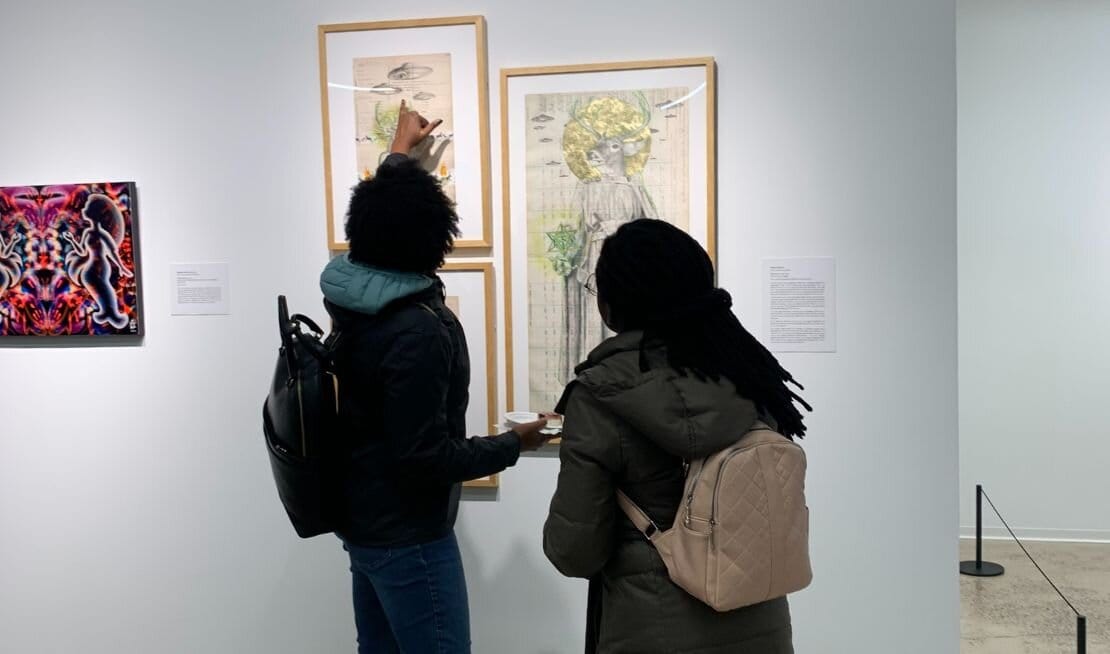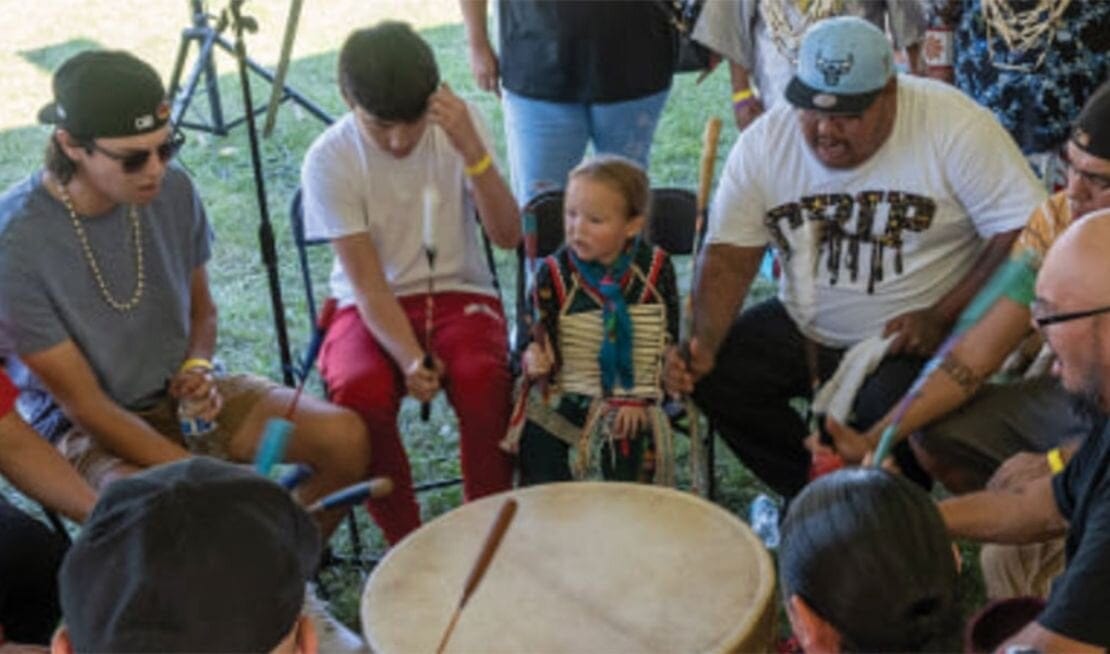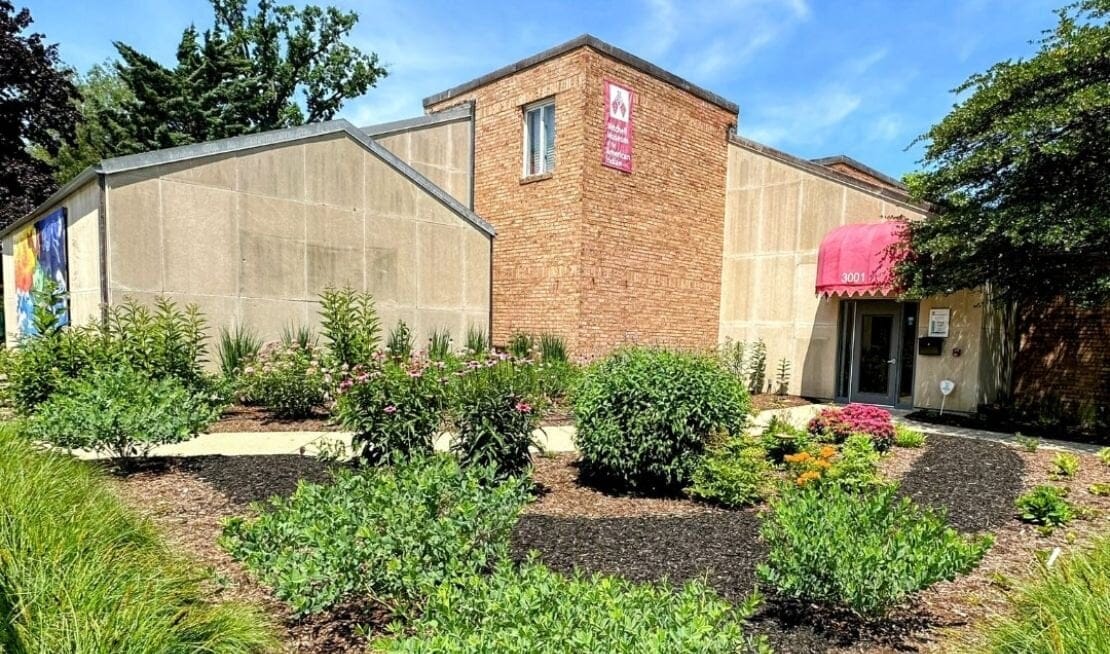
Land Acknowledgment
The Chicago Architecture Center acknowledges its presence on unceded Native land and honors the Indigenous nations connected to this region, past and present. “Bodéwadmikik ėthë yéyék/You are on Potawatomi Land” mural by Andrea Carlson, 2021; Photo by Anna Munzesheimer.
The Chicago Architecture Center acknowledges its presence on unceded Native land and honors the Indigenous nations connected to this region, past and present. “Bodéwadmikik ėthë yéyék/You are on Potawatomi Land” mural by Andrea Carlson, 2021; Photo by Anna Munzesheimer.
The Chicago Architecture Center stands on unceded native land.
Several Native nations share a connection to this region and to each other. These include Ojibwe, Odawa and Potawatomi—all related Anishinaabe Tribes—in addition to Ho-Chunk, Kaskaskia, Kickapoo, Mascouten, Menominee, Meskwaki, Myaamia, Peoria, and Sac and Fox. These nations lived and traveled here long before non- Native settlers incorporated Chicago. Their trade routes, sacred earthen mounds, dwellings of bent saplings and birch bark, and other environmentally-sustainable structures tell part of an unbroken story about Chicago architecture. Today, Chicago boasts one of the largest Indigenous populations on the continent, a thriving community despite enduring generations of indignity and violence.
The 1833 Treaty of Chicago culminated a series of skewed land contracts the U.S. government imposed on Potawatomi people, forcing the Tribe west into unfamiliar territory beyond the Mississippi River. When the Great Chicago Fire burned the downtown in 1871, the city piled its rubble into Lake Michigan, extending the shoreline into space never contractually surrendered. In the 1917 U.S. Supreme Court case of Williams v. City of Chicago, the Pokagon Band of Potawatomi sued to reclaim the now heavily developed lakefront—a suit the court quickly dismissed.
The Chicago Architecture Center commits to sharing honest and empathetic stories of Chicago, its design over time, and the diverse people who have imprinted the city with a unique sense of place. Our responsibility includes spotlighting the region’s earliest residents, many whose descendants still proudly call Chicago home. This ongoing commitment to champion our Indigenous friends, neighbors and kin is essential to our work towards building a better Chicago.
Reconocimiento De Tierras Indígenas
Tenga en cuenta que el resto de la pagina esta en inglés.
El Centro de Arquitectura de Chicago está situado en terreno indígena nativo americano no cedido.
Varias tribus indígenas americanas comparten una conexión con la región de Chicago y entre sí. Estas tribus incluyen las Ojibwe, Odawa y Potawatomi— tribus Anishinaabe — y tambien Hohunk, Kaskaskia, Kickapoo, Mascouten, Menominee, Meskwaki, Myaamia, Peoria, Sac y Fox. Estas naciones entre sí vivieron, viajaron y construyeron aquí generaciones antes de que colonos no nativos incorporaran Chicago. Sus rutas comerciales, montículos sagrados de tierra, sus viviendas de árboles doblados y corteza de abedul, y otras estructuras ambientalmente sostenibles cuentan parte de una historia ininterrumpida sobre la arquitectura de Chicago. Chicago cuenta con una de las poblaciones indígenas más grandes del continente, una comunidad próspera a pesar de sostener generaciones de indignidad y violencia.
El Tratado de Chicago de 1833 culminó una serie de contratos de tierra desequilibrados que el gobierno de EE. UU. impuso al pueblo Potawatomi, lo que obligó a la tribu a entrar en un territorio desconocido al oeste del río Mississippi. Después del Gran Incendio de Chicago de 1871, la ciudad amontonó el escombro del incendio en el lago Michigan extendiendo la costa hacia un espacio que nunca se rindió por contrato. En el caso de la Corte Suprema de EE. UU. de 1917 de Williams v. City of Chicago, la tribu Pokagon de Potawatomi demandó para recuperar la orilla del lago actualmente desarrollada. El tribunal desestimó rápidamente la demanda.
El Centro de Arquitectura de Chicago se compromete a compartir historias honestas y empáticas de Chicago, su diseño a lo largo del tiempo y las diversas personas que han impreso a la ciudad con un sentido único de lugar. Nuestra responsabilidad incluye destacar a los primeros residentes de la región, muchos de cuyos descendientes todavía se enorgullecen en llamar Chicago su hogar. Este compromiso continuo de defender a nuestros amigos, vecinos y parientes indígenas es esencial para nuestro trabajo hacia la construcción de un Chicago mejor.
Pronunciation Guide
- Ojibwe (oh-jib-way)
- Odawa (oh-daa-wuh)
- Potawatomi (pah-tuh-wah-tuh-mee)
- Anishinaabe (ah-neh-sheh-nah-beh)
- Ho-Chunk (ho-chunk)
- Kaskaskia (kah-ska-skee-uh)
- Kickapoo (kick-uh-poo)
- Mascouten (mah-skoo-ten)
- Menominee (muh-naa-muh-nee)
- Meskwaki (muh-skwaa-kee)
- Myaamia (mee-ah-mee-ah)
- Peoria (pee-aw-ree-uh)
- Sac and Fox (sack-and-fox)
Let's Talk About It
On March 31, 2022, we convened a panel of CAC staff and community members for a conversation about developing formal language and concrete actions to recognize Native people as traditional caretakers of the land and water near the confluence of the Chicago River and Lake Michigan. In practice, land acknowledgement is much more than a statement of respect and humility: it calls us all to learn, teach, and internalize Native traditions across generations, including the experiences and perspectives of Native people today.
Recognizing Native Land Is Vital to Our Work
We recognize that many of our guests will first hear our land acknowledgement while visiting the CAC or attending a program or tour. The consolidated language below intends to make space to present a range of Indigenous perspectives in the stories we tell about Chicago architecture, particularly along the Chicago River bank near the mouth of Lake Michigan.
Focused Statement
The Chicago Architecture Center stands on unceded Native land.
Generations of related Tribes tended to the land and waterways before non-Native settlers forced their removal. These include Ojibwe, Odawa and Potawatomi—all Anishinaabe Tribes—in addition to Ho-Chunk, Kaskaskia, Kickapoo, Mascouten, Menominee, Meskwaki, Myaamia, Peoria, and Sac and Fox. Their trade routes and dwellings are part of an unbroken story about Chicago architecture.
The Center commits to amplifying the voices of our earliest residents and of the diverse Indigenous community living here today.
We’re still learning
The Chicago Architecture Center is a community of lifelong learners. We make mistakes and try again. We seek out diverse perspectives and question our own assumptions. We love sharing stories about Chicago, but there are countless voices we haven't fully heard and stories we don’t yet know. We welcome everyone to join us as we strive to build a better and ever more inclusive CAC.





